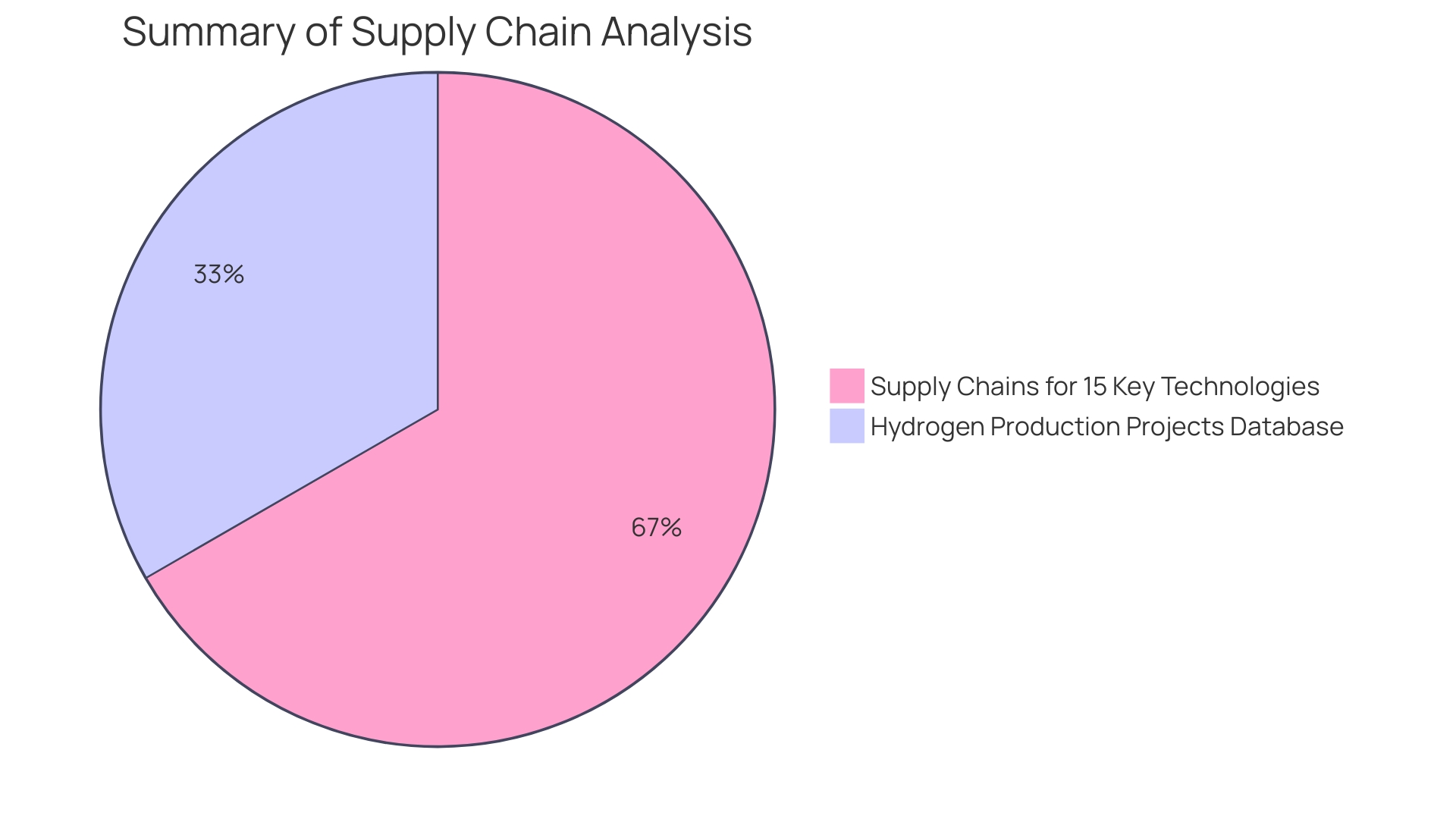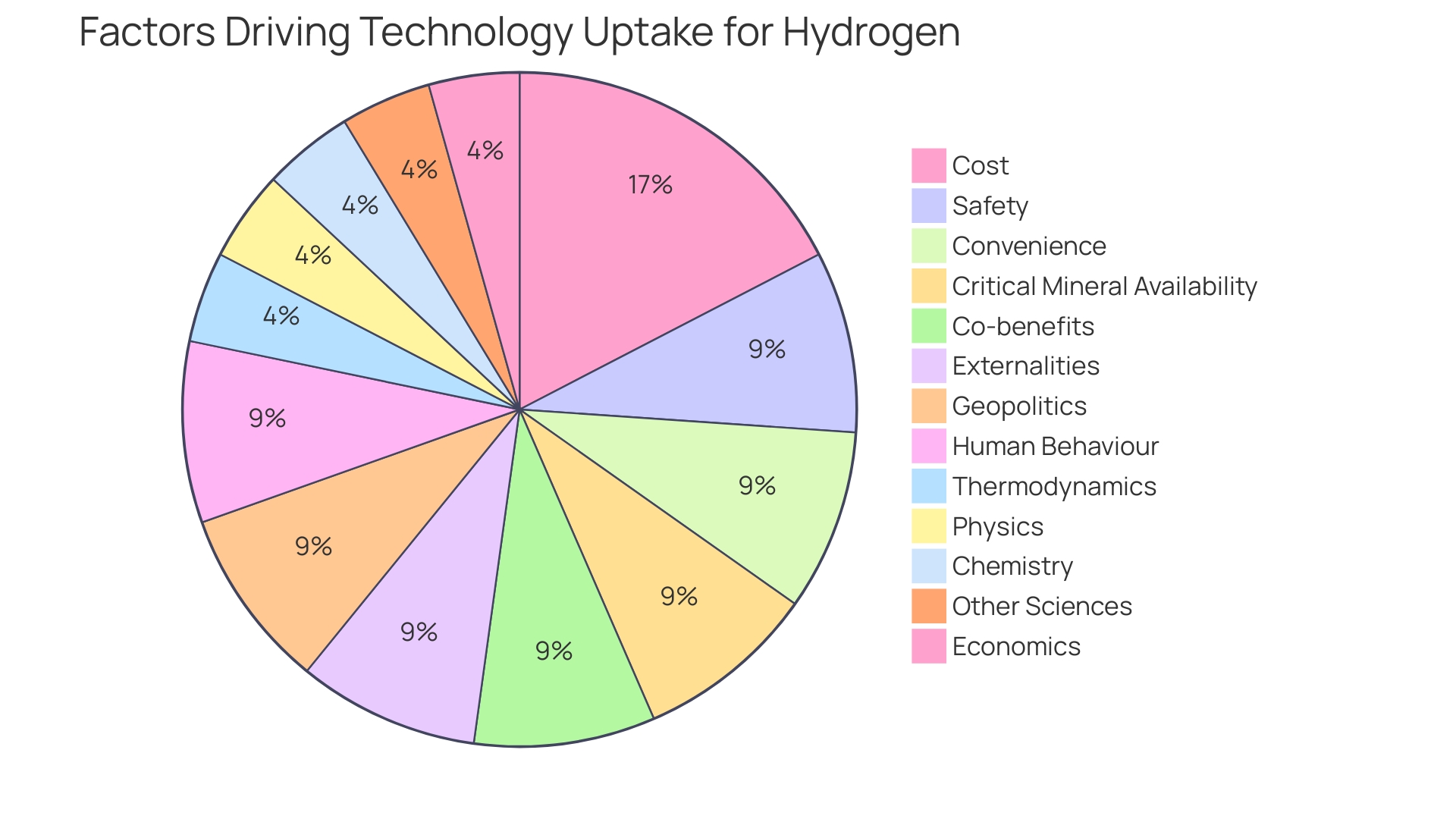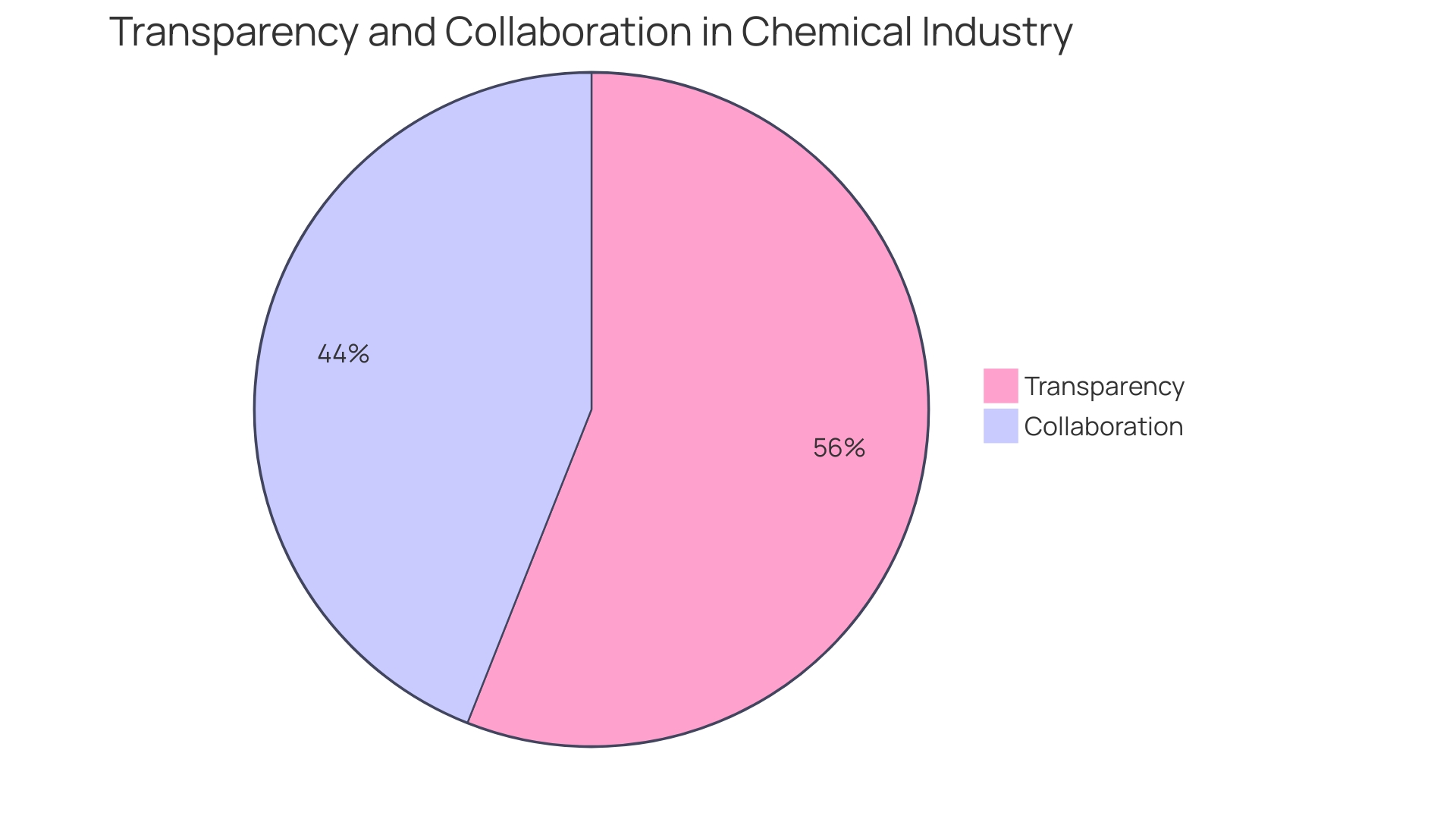Introduction
As a sustainable alternative to fossil fuels, green methanol is gaining traction in the energy market. This versatile compound, also known as renewable methanol or biomethanol, is not only used as a raw material for everyday products but is increasingly utilized as a clean-burning fuel. Its production from renewable sources represents a transformative shift from traditional methanol derived from natural gas and coal.
The demand for methanol, particularly green methanol, is projected to grow substantially, presenting opportunities for companies at the forefront of green hydrogen and methanol production. However, challenges such as higher production costs and careful handling requirements need to be addressed. Despite these obstacles, the push for sustainable fuels is gaining momentum across various sectors, driven by customer demand and regulatory frameworks.
The transition to green methanol is not only crucial for mitigating climate change impacts but also holds significant economic potential. With advancements in production technology and increasing regulatory support, green methanol stands as a promising candidate in the quest for sustainable energy solutions.
Market Overview and Growth Projections
As a sustainable alternative to fossil fuels, green methanol is carving out a significant niche in the energy market. This versatile compound, also known as renewable methanol or biomethanol, serves not only as a raw material for everyday products like plastics, glues, and textiles but is increasingly utilized as a clean-burning fuel. Its production from renewable sources such as e-methanol or bio methanol from agricultural and forestry byproducts represents a transformative shift from traditional methanol derived from natural gas and coal.
Recent innovative collaborations, such as the award-winning partnership between Fertiberia and Heineken Spain, highlight the potential of green methanol to decarbonize processes like beer production. By integrating green hydrogen into fertilizer manufacturing, these companies are taking significant strides towards a low-carbon future, aligning with Heineken's goal of using 100% renewable energy in production by 2025 and achieving net-zero emissions across its value chain by 2040.
The demand for methanol, a highly traded chemical commodity, is poised to grow substantially. According to industry projections, the annual demand for methanol could escalate to approximately 300 million tons by 2050, the majority of which would be green methanol. This burgeoning market presents opportunities for companies like ABEL Energy in Australia and global technology leader Johnson Matthey, who are at the forefront of green hydrogen and methanol production.
However, challenges remain. Green methanol is more costly to produce than its fossil counterpart and is also flammable and toxic, requiring careful handling and storage. Despite this, the push for sustainable fuels is gaining momentum across various sectors. Sustainable aviation fuels (SAFs) are already in use in the aviation industry, while the maritime sector explores green methanol and other renewable energy sources as viable alternatives to fossil fuels.
This pivot towards green methanol is not only driven by the necessity to mitigate climate change impacts but also supported by customer demand and regulatory frameworks. Organizations like C2X are optimistic about the industry's future, as CEO Brian Davis emphasizes the combination of customer pull and regulatory support fueling large-scale project development.
As the green methanol market evolves, it becomes clear that transitioning to renewable fuels is both a crucial strategy in the fight against climate change and a burgeoning economic opportunity. With advancements in production technology and increasing regulatory support, green methanol stands as a promising candidate in the quest for sustainable energy solutions.

Feedstock Analysis: Biomass, Green Hydrogen, and CCS
Green methanol production arises from a diverse array of feedstocks, with biomass, green hydrogen, and carbon capture and storage (CCS) technologies at the forefront. Synthesis gas, or syngas—a blend of hydrogen (H2) and carbon monoxide (CO)—serves as a critical intermediary in producing green methanol. Traditional syngas production has relied heavily on fossil resources like natural gas and coal, leading to significant CO2 emissions. However, advancements are steering towards the gasification of more sustainable materials such as municipal solid waste and biomass.
Moreover, the paradigm is shifting towards e-methanol and bio-methanol, derived from renewable energy and byproducts from agriculture and forestry, respectively. These green methanol types are not only poised to replace their fossil fuel-derived counterparts in various products but are also emerging as a cleaner fuel alternative, particularly in long-distance shipping sectors.
The demand for methanol, especially the green variant, is projected to soar, potentially tripling by 2050. Companies like Moller Holding are scaling up, with ambitions of producing over three million tons of green methanol annually by 2030. Meanwhile, novel concepts like bio-e-methanol are leveraging biological waste combined with hydrogen to optimize energy use and double the methanol yield.
While green methanol carries the benefits of being a low-carbon alternative, it also comes with challenges. It is inherently toxic, flammable, and less energy-dense, necessitating 2.5 times more volume to store the same energy as oil. Furthermore, it is currently more costly to produce than its fossil fuel equivalent. However, industry leaders are confident that with technological advancements and increased production, these costs can be driven down, making green methanol a viable and competitive option in the market.
In summary, the transition to green methanol is not without its hurdles, but the potential environmental benefits and the growing industrial commitment suggest a bright future for this sustainable fuel source.

Price Dynamics and Market Factors
The pricing dynamics of green methanol are shaped by various interlinked factors, which are essential to comprehend for stakeholders in the industry. One of the primary cost influencers is the feedstock, which significantly varies due to the raw materials used, such as agricultural and forestry byproducts for bio methanol or renewable energy sources for e-methanol. The production methods also play a critical role, with technological advancements aiming to improve efficiency and reduce costs over time.
Market demand is another crucial aspect impacting green methanol prices. As outlined by BloombergNEF's research for the New Economy Climate Technology Coalition, the focus is intensifying on decarbonizing sectors where current solutions are insufficient or costly, with green methanol poised as a pivotal resource for reducing greenhouse gas emissions. This demand is projected to surge, potentially tripling the annual need for methanol to around 300 million tonnes by 2050, primarily driven by green methanol.
Government policies and regulatory support are also influential in shaping the market. Positive regulatory frameworks can accelerate the adoption of green methanol, as evidenced in the maritime industry, where green methanol is increasingly viewed as a viable fuel to reduce fossil emissions in long-distance shipping.
Understanding these factors is critical, especially considering the competitive market structure that evolves over time. Drawing lessons from the gas industry, a progression from a vertically integrated structure in the early phases to a more disintegrated and competitive structure is proposed, facilitating efficiency improvements and market-driven dynamics. Furthermore, the development of short-term and spot markets could characterize a mature industry. These structural transitions are vital to consider, as they directly affect the pricing and accessibility of green methanol.
To navigate these price dynamics, stakeholders must closely monitor the evolution of the green methanol market, which, as Brian Davis, CEO of C2X, suggests, is still in its infancy but is expected to grow due to strong customer demand and evolving technologies. Investments are being channeled into large-scale production facilities, with Moller Holding aiming for an annual production capacity of over three million tons by 2030, indicating the industry's commitment to expanding green methanol supply to meet the burgeoning demand.

Case Study: Successful Implementation of Green Methanol
Green methanol, also known as renewable methanol, is emerging as a promising solution in the quest for sustainable fuel and chemical feedstock alternatives. Its utility spans from being a key ingredient in products like plastics and textiles to serving as a potential low-carbon fuel for industries that are challenging to decarbonize, such as long-distance shipping. Despite its advantages, green methanol faces several challenges, including its toxic and flammable nature, requiring 2.5 times more volume to store the same energy as oil, and higher production costs compared to its fossil-derived counterpart.
One illustrative example of green methanol's potential and challenges is the case of ABEL Energy, an Australian company specializing in green hydrogen and green methanol production. ABEL Energy, with its team of experts in synthetic fuels and chemical engineering, is collaborating with Johnson Matthey, a global leader in sustainable technologies. This partnership aims to scale up the production of green methanol, which is crucial as experts project the demand for methanol to potentially triple by 2050, with the majority expected to be green methanol.
The recent expansion of the collaboration between HIF and Johnson Matthey underscores the strategic importance of long-term partnerships in achieving shared sustainability goals. Johnson Matthey's two centuries of experience in metals chemistry is being leveraged to address the challenges posed by climate change, energy supply, and resource scarcity, providing innovative solutions to decarbonize and minimize harmful emissions.
Innovative projects, like the one undertaken by Fertiberia and Heineken Spain, showcase the potential for green methanol to revolutionize industries and reduce carbon footprints. By using green hydrogen to produce low-carbon fertilizers, Heineken Spain is taking significant steps towards their ambitious goal of reducing CO2e emissions by 30% in their value chain and achieving net-zero by 2040.
The NEOM project in Saudi Arabia serves as another testament to the role of green methanol in shaping future sustainability. As a region designed to function as a living laboratory for innovation, NEOM is anticipated to become a hub for research and development in renewable energy, including green methanol.
The burgeoning interest in green methanol is further evidenced by the Bloomberg New Economy Climate Technology Coalition's focus on scaling up clean hydrogen ecosystems and decarbonizing hard-to-abate sectors. The Coalition is composed of experts across various fields, indicating a collective effort to overcome the current roadblocks to a sustainable future.
Moreover, the maritime industry is looking towards sustainable methanol as one of the alternative energy sources to replace fossil fuels. The growing demand for sustainable fuels across various sectors, with road transport currently leading the way, highlights the crucial role that green methanol could play in the global transition towards a decarbonized economy.
While the road ahead is paved with challenges, the case of ABEL Energy and its collaboration with Johnson Matthey, along with other groundbreaking initiatives, demonstrates that green methanol is more than a mere contender in the race against climate change. It is a viable path towards a sustainable future, provided that the production capacity can meet the surging global demand.
Future Outlook and Potential Opportunities
Green methanol, a pivotal element in the shift towards sustainable energy practices, stands at the forefront of innovation and market expansion. Technological advancements and regulatory developments are fostering an environment ripe for green methanol applications to flourish, particularly in sectors where other low-carbon alternatives are not yet viable. The Bloomberg New Economy Climate Technology Coalition, an assembly of experts from various backgrounds, emphasizes the urgency in scaling up climate-critical green technologies, including green methanol. Their collaborative efforts are setting the stage for a transformative approach to industrial decarbonization.
Despite the challenges associated with its production, such as the need for 2.5 times more volume to match the energy content of oil and higher costs compared to its fossil fuel counterpart, green methanol's role in reducing greenhouse gas emissions cannot be overlooked. Its versatility as a feedstock for chemicals and as a potential fuel source for engines, particularly in 'hard-to-abate' industries like long-distance shipping, is driving research and investment into more cost-effective and efficient production methods.
The market potential for green methanol is further evidenced by the projected tripling of its demand by 2050, with an expectation to reach approximately 300 million tons annually, the majority of which will be green methanol. Companies like BASF and Envision Energy are already spearheading initiatives to catalyze the transition to renewable energy sources, while Moller Holding's ambitious production plans signify a tangible step towards meeting the escalating demand.
This burgeoning interest in green methanol is not merely a trend but a testament to the collective effort of industry leaders and researchers to provide sustainable solutions in the face of an escalating climate crisis. As investments continue to pour into the green methanol landscape, it is poised to become a cornerstone in the arsenal of green chemistry, revolutionizing the use of fuel and derivatives in an eco-conscious world.

Conclusion
In conclusion, green methanol is gaining traction as a sustainable alternative to fossil fuels. Despite challenges like higher production costs and careful handling requirements, the demand for green methanol is projected to grow substantially, presenting opportunities for companies in the renewable energy sector.
Green methanol production utilizes diverse feedstocks, including biomass, green hydrogen, and carbon capture and storage technologies. While it offers benefits like being a low-carbon alternative, it also faces challenges such as toxicity, flammability, and higher costs. However, industry leaders are confident that advancements in technology and increased production can overcome these challenges.
Understanding the pricing dynamics of green methanol is crucial, with factors like feedstock, production methods, market demand, and regulatory support shaping its costs. Successful case studies, like the collaboration between ABEL Energy and Johnson Matthey, highlight the potential and challenges of implementing green methanol.
Looking ahead, green methanol stands at the forefront of innovation and market expansion. Technological advancements and regulatory developments create an environment conducive to its growth. Its role in reducing greenhouse gas emissions, versatility as a feedstock, and potential as a fuel source in 'hard-to-abate' industries drive research and investment into more cost-effective and efficient production methods.
With the projected tripling of demand for green methanol by 2050, companies are spearheading initiatives to transition to renewable energy sources. The collective effort of industry leaders and researchers emphasizes the importance of green methanol in providing sustainable solutions in the face of the climate crisis.
As investments continue to pour into the green methanol landscape, it is poised to become a cornerstone in the arsenal of green chemistry, revolutionizing the use of fuel and derivatives in an eco-conscious world. The future outlook for green methanol is bright, with its potential to contribute to a sustainable and decarbonized economy.




